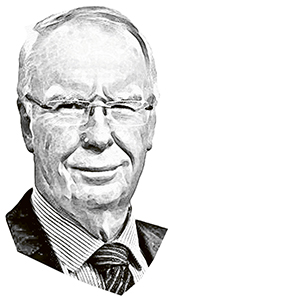“Government can’t be in the business of dictating breakthroughs or directing research, but it does have a vital responsibility to invest in our research agencies and universities and to support the field of smart and skilled Australians who will lead this work.”
This was the Prime Minister Anthony Albanese speaking at the Committee for Economic Development of Australia (CEDA) conference at Parliament House in Canberra earlier this month.
He added that the “three things that government can do (are):
- signaling a respect for science, evidence and research
- valuing foundational work – as well as commercial applications
- creating a sense of certainty and support for long-term projects, so researchers and scientists can do their work without looking over their shoulder or spending their time re-applying for funding.”
Here is some context that can help frame the Prime Minister’s comments, and to outline the challenge.
On 30 August 2022, federal Education minister Jason Clare announced a Review of the Australian Research Council (ARC). This is to be welcomed, but the review can only be an element in sorting out the chaotic system for funding higher education research investment.

In 2020 funding the ARC accounted for $750 million (6 per cent) of Australia’s $12.7 billion expenditure on higher education research and development.
The level of ARC funding has been in decline from a peak of $1.07 billion reached in 2012-13 (inflation adjusted), which amounted to 11 per cent of total higher education expenditure on R&D.
Over the same period, funding for health research through the Medical Research Council fell from $936 million to $828 million in real terms.
But despite these cuts, higher education research and development expenditure makes up over a third (34 per cent) of Australia’s national R&D effort. How come?
This happens because the greater part (53 per cent) of higher education R&D expenditure is funded by universities themselves out of their internal funds. From 2014, a significant and growing proportion of these funds is constituted by international student fees.
International student fees have changed the structure of the ‘teaching surplus’ – the difference between the cost of providing teaching and learning services to students and the total funding provided under the Commonwealth Grants Scheme (CGS), the HECS/HELP scheme and other payments specifically for teaching purposes.
Since 2012 CGS funding in real terms has flatlined, with some growth in HECS/HELP payments as student numbers increased. The profitability of HECS/HELP payments declined with the Job Ready Graduates (JRG) package introduced in 2020. The JRG package had a clear objective to balance CGS funding with the cost of course delivery.
According to the US National Science Foundation Science and Engineering Indicators, Australia ranks fifth highest in the OECD, and well above the average, for the proportion of higher education research and expenditure in GDP—behind only Canada, Norway, Switzerland, and Denmark.
But more significantly, Australia ranks ahead of all other countries in the proportion of higher education research funded from internal sources.
Additionally, the proportion of higher education research and development in Australian GDP increased substantially over the 2008 to 2018 period. But a decline in 2020 is sending warning signals.
Up until now, higher education has been doing the ‘heavy lifting’ in Australia’s national R&D effort. However, without continuing and increasing international student revenues, the capacity for the Australian higher education sector to contribute to Australia’s R&D effort will decline, and without direct policy intervention, it is likely to continue in this direction. This is very concerning.
Higher education expenditure on R&D is very important for creating and transferring knowledge across many industry sectors. It has been particularly important for the Health industry, where it makes up 34 per cent of total expenditure, as well as in the Environment (9 per cent) and in Agriculture (6 per cent).
But the higher education research and development contribution to the Manufacturing industry makes up only 5 per cent of the total, ICT (3 per cent), and Energy (3 per cent). By contrast, research expenditure for Education, Law and Politics and Culture makes up 14 per cent of the total.
In the current innovation and industry policy environment, policy analysists and commentators may be concerned that this allocation gives insufficient priority to research in Manufacturing, ICT and Energy and particularly renewable energy around issues of climate change and sustainability.
However, the current allocations reflect historical and institutional factors with considerable long term path dependency. The research investments have created a very strong base in research capacity and capability and sit behind Australia’s impressive performance in global ranking systems.
Any effort by the Commonwealth to redirect Health, Environmental and Agricultural research to Manufacturing, ICT and Energy would be unwelcome in the higher education sector, and could not, in all reality be sustained.
Higher education research and development is also allocated to fundamental and strategic research that addresses national benefit outcomes, providing a framework for preparedness and prescience concerning major threats such as natural disasters and human and animal pandemics.
Higher education research takes a long-term view on economic, technological, social, and public policy change.
Across these areas, higher education research allocates 16 per cent of the total to “expanding knowledge”. No-one would seriously suggest that research in these areas should be curtailed.
The only way that the allocation of higher education expenditure for research and development in areas of high policy priority could be increased in the short term, and over the longer term, is for the Commonwealth, the state/territory governments and businesses to substantially increase and specifically target funds through existing and new research investment channels.
To create what the Prime Minster describes as “a sense of certainty and support for long-term projects, so researchers and scientists can do their work without looking over their shoulder, or spending their time re-applying for funding”, as well as addressing national policy priorities, a strong case can be made for two new independent research funding Councils: one in Science, Engineering, and Technology, and another in Energy and Resource Sustainability.
These new Councils should be formed on the basis of new funding, with funding for the ARC and Medical Research Council restored to 2013-14 levels in real terms.
Finally, investment in higher education research should move away from Minister-controlled and discretionary “funding programs”. They attract all the worst features of political lobbying and absence of evidence to support allocation decisions.
Dr John Howard is Managing Director of Howard Partners, a public policy research and analysis firm he established in 1998. He is also a Vising Professor at UTS. John can be contacted at john@howardpartners.com.au or through the firm’s website www.howardpartners.com.au
Do you know more? Contact James Riley via Email.

